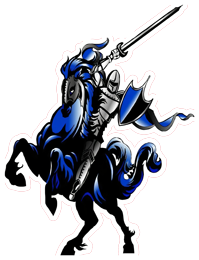Head Lice Information
General information about Head Lice
If you have never had any dealings with lice - Know that it is and can be difficult to get rid of. However they pose no real health risk they are just a nuisance.
Head Lice Facts for kids
What are head lice?
Small, nearly invisible bugs that like to live in hair and bite scalps
Who can get head lice?
Anyone with a head and hair
How do you get head lice?
Touching your head with someone who has lice in their hair
Sharing your cap with someone who has head lice
Sharing your comb, brush, or hair accessory with someone who has head lice
Sharing clothing, bedding (sheets, blankets, pillows) with someone who has head lice
What are the symptoms if you have head lice?
Itchy scalp
Visible bugs crawling on your scalp or hair
Tiny white dots (eggs/nits) stuck to your hair, close to your head (you can still have these after being treated to get rid of head lice)
What happens if you get sent to the nurse’s office to be checked for head lice?
The nurse will look very closely all over your head, by moving your hair around with little wooden sticks
If head lice are found, you will be sent home and you will need to be treated before you can come back to school, and your family/daycare will need to treat their homes
You will be rechecked two days after your treatment and again a week later.
How do you get rid of head lice if you get them?
Shampoo your hair with special shampoo OR
Suffocate them with a head treatment of Vaseline or mayonnaise (instructions available from nurse’s office)
Use a special comb to get rid of the nits after the shampoo or suffocation treatment
AND wash clothing, bedding, hats, combs and brushes and anything else that comes in contact with heads in HOT water
For those things that are not washable, put them in sealed plastic bags for 2 weeks
What can you do to avoid getting head lice
Each person uses only his or her own comb or brush, hair bands, etc
Keep your cap from touching other people’s caps when at home, at school, at day care or anywhere else. (Try putting your cap and scarf inside your jacket sleeve when you hang up your jacket.)
Report to your parent, teacher or the nurses at school if your head starts itching a lot (especially around your ears or at the back of your neck) or if you happen to notice lice on someone else’s head
How can my parents learn more about head lice?
Call the school nurse’s office or look on the school website under the “programs and services” section for the “health services” section. The nurse has a link there to a website about head lice.
Here are a few you tube video links to help you identify and learn some ways to remove them. We do not have any opinions based on the video it is just to show you what they are and a few ways to help get rid of them. Ask the school nurse for more in depth tips and tricks. There are many options out there for lice removal.
This link to you tube is about how to identify lice
https://www.youtube.com/watch?v=UrScqdNuTpc
https://www.youtube.com/watch?v=o75oLlVgKcE
This link is from Lice911.com. It really shows you what to look for in the hair. Title: What do lice and nits look like in the hair?
https://www.youtube.com/watch?v=mAsfE8AWxzU
Nit Picking Work Chart
This is a checklist to help make sure you have covered all areas to remove the head lice.
